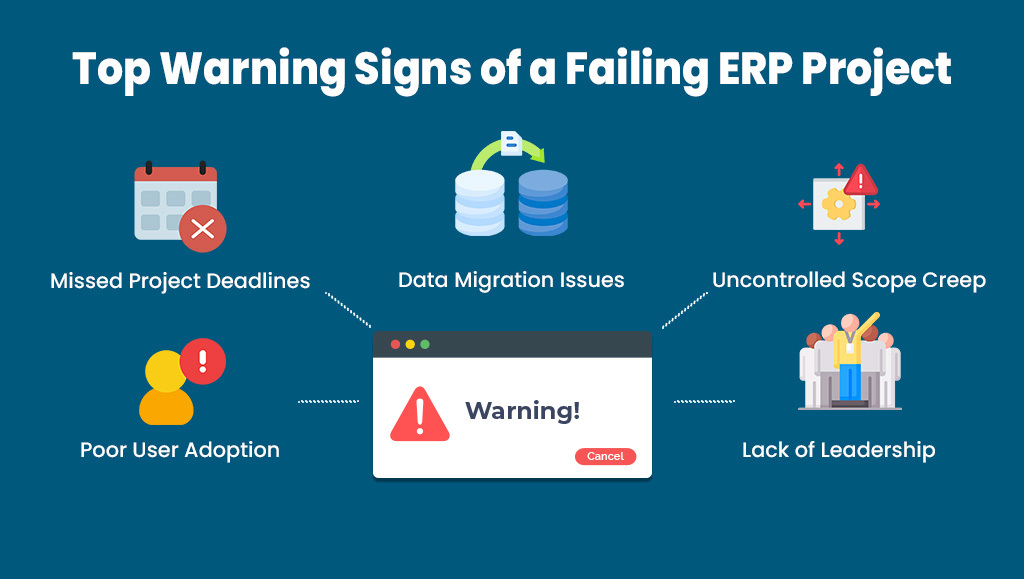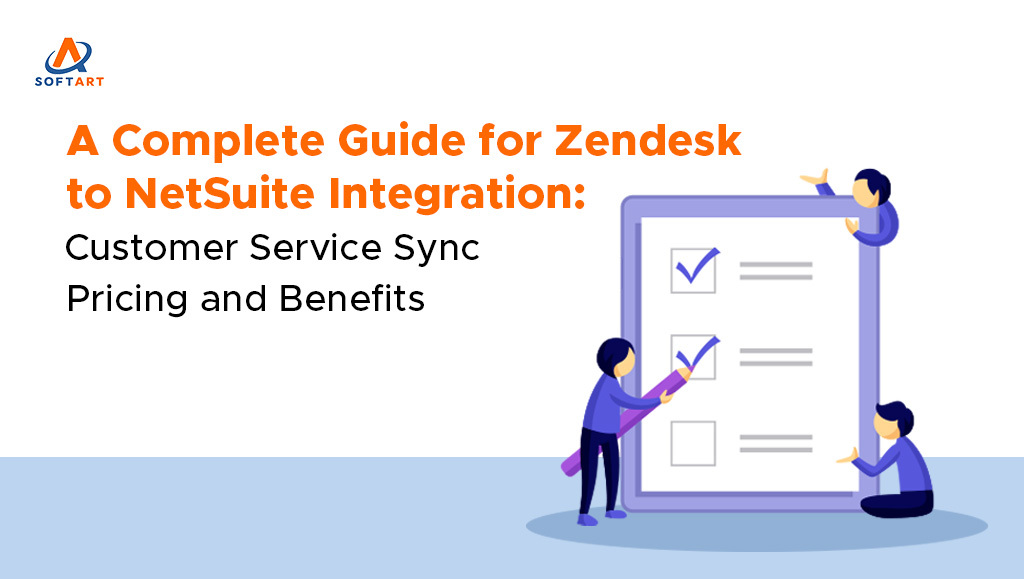Why Do ERP Projects Fail? And How You Can Fix Yours Before It’s Too Late
Have you ever asked yourself, “Why do ERP projects fail?” You’re not alone. Mid-to-large businesses often invest millions in ERP systems like Oracle, NetSuite, or Microsoft Dynamics 365, only to face delays, budget overruns, and frustrated teams.
Studies show 70% of ERP projects fail to meet objectives, costing companies millions and creating operational chaos. But most failing ERP projects give off clear warning signs long before disaster strikes. Spotting them early and acting decisively, can turn your failing ERP project into a success story.
This guide will walk you through the most common symptoms of failing ERP implementations, real-world examples, and a step-by-step rescue framework inspired by SoftArt Solutions Inc., a trusted Oracle ERP Implementation Partner in USA.
Top 5 Warning Signs Your ERP Project Is Failing
1. Deadlines Keep Slipping: No Matter What You Try
Persistent delays and missed milestones are one of the most common symptoms of a failing ERP project. Scope creep, underestimated resources, or unclear responsibilities often cause timeline slippage.
Quick Fix:
- Implement a clear project plan with milestones and progress dashboards
- Conduct weekly check-ins and update resource allocation as needed
2. Leadership Isn’t Fully Onboard
If your executives are tuning out meetings or delegating decisions endlessly, your ERP project is at risk. Executive sponsorship is critical to secure funding, resolve conflicts, and guide cross-departmental collaboration.
Quick Fix:
- Create a steering committee with top-level executives
- Keep them engaged with concise progress reports and KPI dashboards
3. Employees Don’t Use the System
ERP systems fail when users don’t adopt them properly. Frustrated employees avoid the system, resort to spreadsheets, and sabotage the ROI you hoped for.
Quick Fix:
- Role-based training sessions tailored for different teams
- Interactive workshops and real-life scenario exercises
- Ongoing support and feedback loops
4. Data Migration Is a Mess
Duplicate records, missing entries, or inconsistent data can cripple an ERP system. Without clean, accurate data, reporting becomes useless and decisions are flawed.

Quick Fix:
- Conduct a full data audit before migration
- Cleanse, validate, and test data in stages
- Establish ongoing data governance policies
5. Scope Creep Is Out of Control
Adding modules or features mid-project without assessing impact strains resources and derails timelines. Many organizations don’t realize that ERP projects fail mostly due to uncontrolled changes.
Quick Fix:
- Implement a formal change control process
- Evaluate each change for impact on budget and schedule
- Prioritize features based on business value
How to Save a Failing ERP Implementation: Step-by-Step Framework
Recognizing symptoms is only the first step. The next is acting decisively with a structured plan. Below is a practical 6-Step ERP Rescue Framework inspired by SoftArt Solutions Inc., your trusted Oracle ERP Implementation Partner in USA.
6-Step ERP Rescue Framework
| Step | Focus Area | Actionable Tips | Key Outcome |
|---|---|---|---|
| 1. ERP Audit | Assess project health |
|
Uncover hidden issues early; get a clear snapshot of project status |
| 2. Realign Goals | Strategic alignment |
|
Ensure ERP supports business objectives; set measurable success |
| 3. Change Management | Reduce resistance |
|
Minimize disruptions; increase buy-in & user confidence |
| 4. Training & Support | Drive adoption |
|
Higher user adoption; faster employee ramp-up |
| 5. Data Management | Ensure accuracy |
|
Reliable reporting; better decision-making |
| 6. Monitor & Adjust | Continuous improvement |
|
Maintain momentum; prevent small issues from derailing the project |
How to use this framework:
- Treat it as your roadmap for rescuing a struggling ERP project.
- Reference it in weekly meetings to keep your team focused.
- Adjust the steps to your organization’s specific context.
Real-Life ERP Rescue Case Study
Company: XYZ Manufacturing Inc.
Challenge: Delays, cost overruns, and frustrated employees threatened ERP implementation.
Solution: Engaged an external consultant and applied the 6-Step ERP Rescue Framework:
- Conducted a full ERP audit
- Realigned goals with business strategy
- Rolled out comprehensive training and change management
Result:
- 95% user adoption
- 20% improvement in operational efficiency
- 15% increase in on-time deliveries
Even struggling ERP projects can be turned around with the right approach.
SoftArt Solutions Inc.: Your ERP Implementation Lifeline
Partnering with a seasoned Oracle ERP Implementation Partner in USA can make all the difference. SoftArt Solutions Inc. specializes in:
- ERP audits to uncover weaknesses
- Strategic realignment of ERP with business goals
- Structured change management and training programs
- Ongoing post-implementation support
With expert guidance, you can recover failing ERP projects and maximize ROI.
Key Takeaways
- Recognize symptoms early: deadlines, adoption issues, data problems
- Executive sponsorship drives momentum
- Employee engagement is critical
- Data integrity ensures accurate decisions
- Scope control prevents overruns
- Structured intervention can turn failing projects into success stories
Ready to Rescue Your ERP Project?
Don’t let delays and frustration cost your business. Contact SoftArt Solutions Inc., your trusted Oracle ERP Implementation Partner in USA, to learn how to save a failing ERP implementation and achieve measurable business results.
Frequently Asked Questions:
Q. Why do ERP projects fail?
Ans. Usually, poor planning, lack of commitment by top management, employee resistance, data in disarray, or the overloading of functionalities during the project phase contribute to ERP projects’ failure. Around 70% of ERP projects do not accomplish their intended goals. However, predicting the flagging signs of a crisis can be a game-changer for these projects so they can continue.
Q. Can a failing ERP project be saved?
Ans. Definitely. A difficult ERP project can be reformed by doing a system audit, adjusting it according to company goals, employee training, solving data-related problems, and monitoring progress. Organizations like SoftArt Solutions Inc., a reliable Oracle ERP Implementation Partner in the USA, who are experts in turning around distressed situations, are available to help companies.
Q. What are the common signs of a failing ERP project?
Ans. The causes of failure to meet deadlines, non-involvement of leadership, poor adoption by staff, messy data, and uncontrolled changes in features are among the warning signs of a failing ERP project. The earliest recognition of these signs gives you the opportunity to offer corrective action in time.
Q. Why hire an Oracle ERP Implementation Partner in USA?
Ans. The proper way to go is with a seasoned teammate on your side who will be in charge of the necessary planning, smooth running of the implementation, employee orientation, and continued support. This partnership increases the likelihood that a planned and carried out failed ERP implementation will be saved and business benefits will arise.
Q. Can a struggling ERP project still deliver results?
Ans. Yes. Even a struggling ERP project may become more efficient and produce genuine business value after conducting the right audit, aligning, training, and cleaning the data.






![Duplicate Data in Dynamics 365 [What It Costs and How to Fix It]!](https://softartsolutionsinc.com/wp-content/uploads/2025/12/duplicate-data-in-dynamics-365-what-it-costs-and-how-to-fix-it.jpg)

